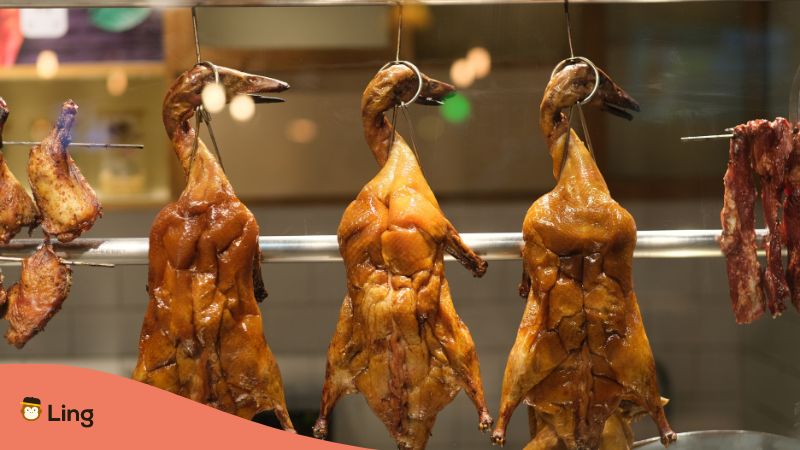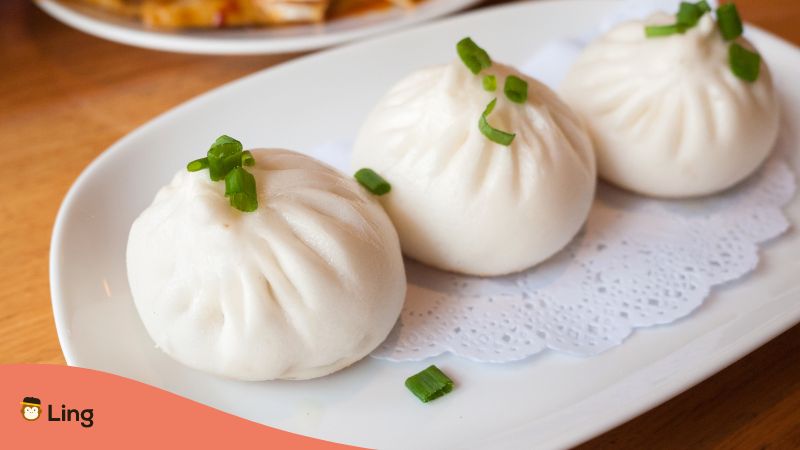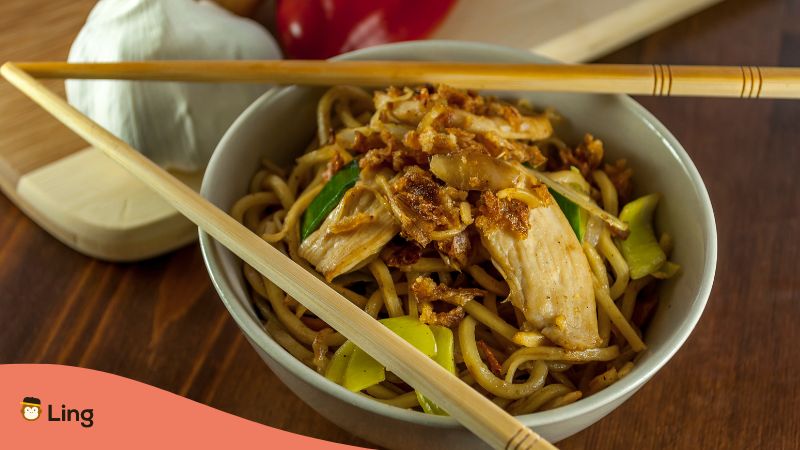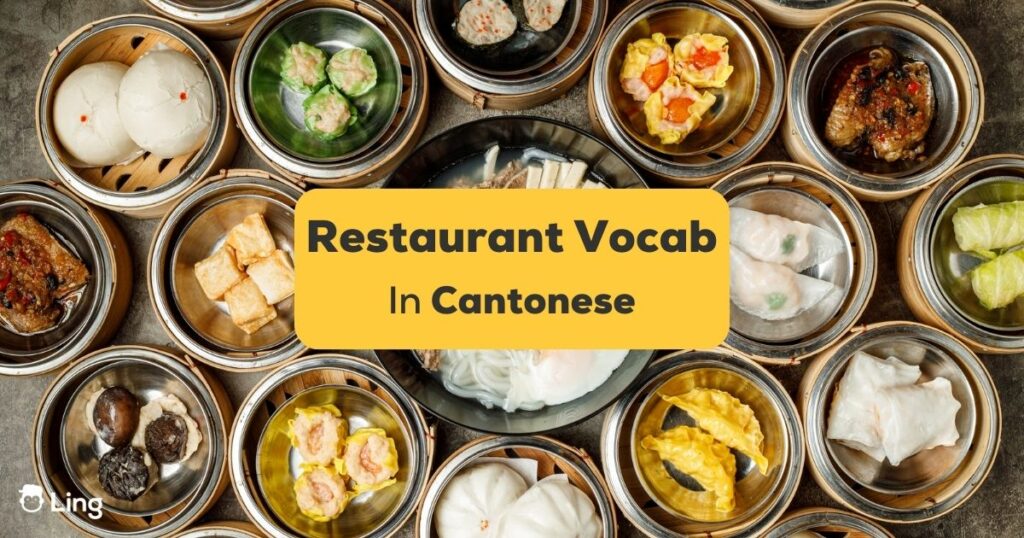Are you looking to learn a few words to use the next time you head to a Cantonese restaurant to order your favorite buns? Well then, explore this guide on Cantonese restaurant vocabulary and impress your waiter on your next visit!
Cantonese cuisine, also known as Guangdong cuisine, is one of the most popular and renowned Chinese culinary traditions. Originating from the Guangdong province in southern China, Cantonese cuisine is a part of Chinese culture that has been heavily influenced by its location near the sea and its proximity to Hong Kong and Macau. It is best known for its emphasis on fresh ingredients, minimal use of spices, and a balance of flavors.
Millions of people worldwide seek out this cuisine as it has been gaining a lot of traction in the gastronomical society. In many cities with large Chinese communities, Cantonese restaurants can be found everywhere, catering to locals and tourists.

Talking by personal experience, just next to my house, there is an excellent Cantonese restaurant, and its food has become part of my diet at least once a week. It is my guilty pleasure!
Every time I invite friends to my house, we always have the famous Cantonese dim sum, a style of Cantonese cuisine featuring small plates of steamed or fried dumplings and other bite-sized delicacies.
In recent years, Cantonese cuisine has also been gaining popularity in other parts of the world as more people look for authentic Chinese food experiences. It is also often considered one of the best representatives of China’s and Hong Kong’s culinary culture.
Well, with the growing fame of this cuisine, even if you don’t visit China, you’ll probably end up visiting a local Cantonese restaurant. It is inevitable, and I can assure you that if you haven’t yet, you’ll eventually do it, and you’ll end up returning often!
Thus, I decided to curate this guide to the most useful words and phrases you can use during your next experience with Cantonese food. Especially in Hong Kong, you’re guaranteed to impress your waiter if you use a few expressions I’m about to teach you! Don’t be scared by the Chinese characters, and let me help you order your next meal in perfect Cantonese!

Cantonese Expressions Before The Meal
Hello, are you open? – 你好,請問有營業嗎?(nei5 hou2, tsing2 man6 jau5 jing4 jip9 maa3?)
This should be the first question you ask when getting to the restaurant. After a quick greeting, ask if they are open. If they say that they are, then you’re in luck! Get in and eat!
Do you have a table for two? – 你們有兩人桌嗎?(nei5 mun4 jau5 loeng5 jan4 tsoek8 maa3?)
After establishing that the restaurant is open, a common practice is to ask if they have a table for you. Use this phrase and add the number of people at your party!
Can I have the menu? – 我可以要菜單嗎?(ngo5 ho2 ji5 jiu3 tsoi3 daan1 maa3?)
Another useful expression, especially if you’re visiting a restaurant for the first time.
Where is the bathroom? – 洗手間在哪裡?(sai2 sau2 gaan1 dzoi6 naa5 loey5?)
Not only in restaurants but for the entire duration of your trip, you should learn how to ask for directions to the bathroom. Eventually, you’ll end up needing them!
We just want to have drinks. – 我們只想喝點酒。(ngo5 mun4 dzi2 soeng2 hot3 dim2 dzau2)
If you’re going to a restaurant just planning to have a drink, it is probably a good idea to let your waiter know, as some restaurants have dedicated areas for people just ordering drinks. Use this sentence to advise your waiter that you’re only there for a drink.
Can we order? – 我們可以訂購嗎?(ngo5 mun4 ho2 ji5 deng6 kau3 maa3?)
Finally, it is time to order after you’ve all chosen what Cantonese delicacy you will have. Call for the waiter’s attention and shoot “我們可以訂購嗎?” to ask if you can order.

Cantonese Expressions During The Meal
This is not what I ordered. – 我們可以訂購嗎?(ngo5 mun4 ho2 ji5 deng6 kau3 maa3)
Sometimes mistakes happen. And occasionally, you don’t get what you’ve ordered because some miscommunication occurred on the way from your table to the kitchen. That’s when “我們可以訂購嗎?” comes to action.
Everything is delicious. – 一切都很美味 (jat7 tsai3 dou1 han2 mei5 mei6)
If your waiter comes to the table and asks how your food is, then this is your time to shine! Impress your friends by saying 一 切都很美味 (jat7 tsai3 dou1 han2 mei5 mei6)

Cantonese Expressions After The Meal
Can we have the bill, please? – 我们可以要账单吗?(ngo5 mun4 ho2 ji5 jiu3 dzoeng3 daan1 maa3?)
After you’ve stuffed yourself with Dim Sum, or some unbelievably delicious Chinese noodles, it is time for what we Portuguese call “the painful” – time to ask for the check!
We’ll come back for sure! – 我們一定會回來的!(ngo5 mun4 jat7 ding6 wui5 wui4 loi4 dik7)
If you liked your meal, why don’t you give a few words of encouragement to the staff by saying that you liked it so much you’ll return eventually?
Thank you! – 謝謝 (dze6 dze6!)
And, of course, we couldn’t leave this sentence out. After your meal, don’t forget to thank the staff for both the food and the service!

Useful Cantonese Restaurant Vocabulary
| English | Cantonese | Pinyin |
| Waiter | 侍應 | si6 jing3 |
| Chef | 廚師 | tsy4 si1 |
| Food | 食物 | sik9 mat9 |
| Drink | 喝 | hot3 |
| Fork | 叉 | tsaa1 |
| Knife | 刀 | dou1 |
| Spoon | 勺子 | dzoek8 dzi2 |
| Chopsticks | 筷子 | faai3 dzi2 |
| Glass | 玻璃 | bo1 lei1 |
| Water | 水 | soey2 |
| Restaurant | 餐廳 | tsaan1 teng1 |
| I’m vegetarian | 我係素食者 | ngo5 hai6 sou3 sik9 dze2 |
| I’m vegan | 我係嚴格嘅素食主義者 | ngo5 hai6 jim4 gaak8 ge3 sou3 sik9 dzy2 ji6 dze2 |
| I don’t eat… | 我唔食… | ngo5 m4 sik9… |
| I can’t eat… | 我食唔落… | ngo5 sik9 m4 lok6… |
| I’m allergic to… | 我對… | ngo5 doey3… |
| Meat | 肉 | juk9 |
| Chicken | 雞 | gai1 |
| Fish | 魚 | jy4/jy2 |
| Eggs | 蛋 | daan6/daan2 |
| Milk | 牛奶 | ngau4 naai5 |
| Chocolate | 巧克力 | haau2 hak7 lik9 |
| Alcohol | 酒精 | dzau2 dzing1 |
| Sugar | 糖 | tong4/tong2 |
| Vegetables | 蔬菜 | so1 tsoi3 |
| Fruit | 水果 | soey2 gwo2 |
| Nuts | 堅菓 | gin1 gwo2 |
| Gluten | 蕨質 | kyt8 dzat7 |
| Coffee | 咖啡 | gaa3 fe1 |
| Check | 查看 | tsaa4 hon3/hon1 |
| Receipt | 收據 | sau1 goey3 |
| Bathroom | 浴室 | juk9 sat7 |
| To order | 訂購 | deng6 kau3 |
| To pay | 支付 | dzi1 fu6 |

What Are The Most Popular Cantonese Dishes
Cantonese cuisine is known for its delicate flavors and emphasis on fresh ingredients. You can look for countless dishes when diving into this type of cuisine. Thus, to help you decide and not feel overwhelmed by the wide variety of offers on the Chinese menu, I’ve collected a few that I consider the best. Small note: this is my personal opinion and taste. If there is any dish here that you feel worthy of being mentioned, please include it in the comment section:
- Dim sum – small bite-sized dishes typically served in steamer baskets, including some of the most famous options like shrimp dumplings (虾饺) and BBQ pork buns (叉烧). Another famous part of this dish is turnip cakes (萝卜糕), a small fried cake doused in soy sauce.
- Roast meats – Cantonese roast meats are famous for their crispy skin and juicy meat, with roast duck and roast pork being particularly popular.
- Congee – a type of rice porridge that can be enjoyed plain or with various toppings such as meat, seafood, or egg.
- Wonton noodle soup – a classic Cantonese dish featuring tender wontons filled with shrimp or pork and served in a savory broth with egg noodles.
- Claypot rice – a dish cooked with various ingredients such as meat, seafood, and vegetables in a clay pot over high heat, resulting in a crispy crust.
- Stir-fry beef with black bean sauce – a popular dish made with tender beef, garlic, and fermented black beans.
- Fish maw soup – a luxurious seafood soup made with fish maw, shrimp, and scallops.
- Egg tart – a flaky pastry shell filled with a smooth custard filling and can be found in many dim sum restaurants.
- Rice rolls – Also known as rice noodles, or steamed rice rolls, are one of the most popular choices among tourists. Filled with vegetables, seafood, and/or meat, these noodles are steamed and then served with a topping of soy sauce.
- Char siu – BBQ pork cooked over low heat and covered in a sweet and savory gravy.

Over To You!
In the voice of Bugs Bunny, “That’s it, folks!” You’re ready to head to Hong Kong and have your full-on experience in one of the many Chinese restaurants! You’ve learned a few essential sentences that will help you manage your meal and have everything you may need to enjoy your food.
What is the next step, you say? Well, now you need to practice and expand your vocabulary! And for that, I have the perfect tool you can look for!
Speak Cantonese With The Ling App
Ling is a language learning application that is here to help you improve your language skills in over 60 languages from around the world. This application makes the process of learning fun and like a game! You’ll enrich vocabulary, improve grammar, and practice pronunciation through games, puzzles, and quizzes that were developed by language experts and native speakers.
Ling app is available anytime, anywhere, sitting perfectly on your phone for you to access whenever your desire kicks in. Just click on the Ling app and start learning! Download it today and join thousands of others in their language-learning journey!



































































